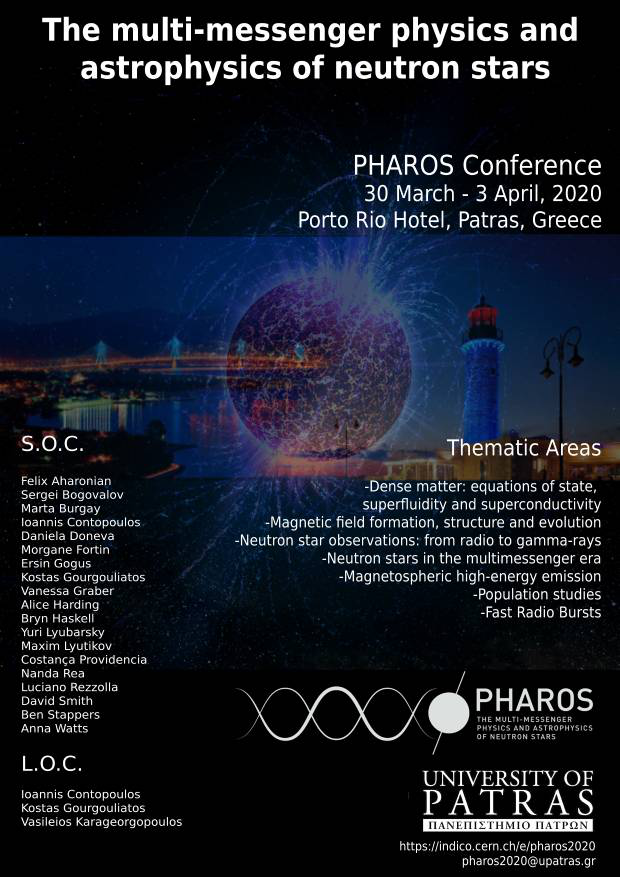Speaker
Description
The interiors of mature neutron stars are expected to host superfluid neutrons that can flow relative to the normal component tracked by electromagnetic emission. Hence, analogously to the hydrodynamic description of terrestrial superfluids like He4, the system is best described by means of a two-fluid model, that is used in out calculations.
Wave propagation in the crust and core of a neutron star is studied by conducting a local plane-wave analysis of the two-fluid hydrodynamic equations for an homogeneous macroscopic element of nuclear matter. A background flow between the two components (as would be expected in the presence of pinning of superfluid vortex lines) is explicitly account. Entrainment coupling and both standard (Hall-Vinen) and isotropic (Gorter-Mellink) forms of the mutual friction are considered.
For standard mutual friction families of unstable inertial and sound waves both in the case of a counter-flow along the superfluid vortex axis and for counterflow perpendicular to the vortex axis are found. Inclusion of entrainment leads to a quantitative difference between instabilities in the crust and core of the star. For isotropic mutual friction no unstable branches of the dispersion law were found, so that instabilities in a straight vortex array may be linked to glitching behaviour, which then ceases until the turbulence has decayed.

